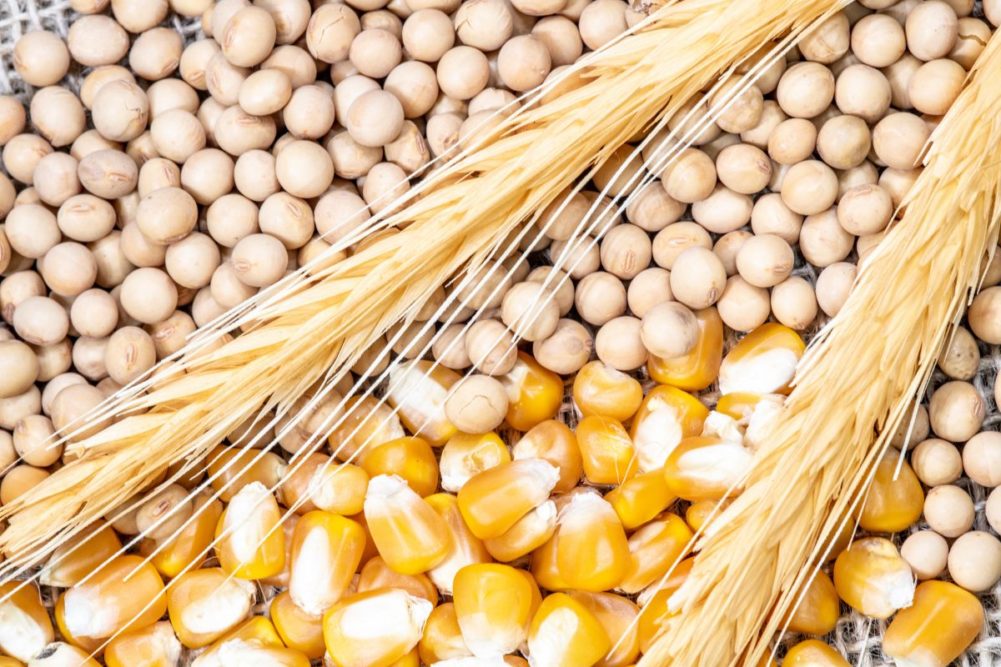 -
-KANSAS CITY, MISSOURI, US — The US Department of Agriculture (USDA) in its Sept. 30 Grain Stocks report estimated US Sept. 1 stocks of corn, wheat and soybeans the highest for the date in four years, although all were within the range of pre-report trade expectations.
The high stocks were reflected in four-year lows in futures prices for all three commodities a few weeks ago, although futures have come off those lows.
The USDA estimated old-crop corn stocks on Sept. 1 at 1.76 billion bushels, up 29% from Sept. 1, 2023, but below the average trade expectation of 1.844 billion bushels. The total included 780 million bushels of corn on farms, up 29% from a year ago, and 980 million bushels off farms, up 30%. Indicated June-August disappearance was 3.24 billion bushels, up 18% from 2.74 billion bushels during the same period last year.
Sept. 1 all-wheat stocks were estimated at 1.986 billion bushels, up 12% from a year earlier and above the average trade expectation of 1.973 million bushels. Of the total, 664 million bushels were on farms, up 11% from last year, and 1.322 billion bushels were off farms at mills, processors, elevators, terminals and warehouses, up 13%. Indicated June-August disappearance of wheat was 682 million bushels, up 12% from the same period last year.
Sept. 1 durum stocks were estimated at 67 million bushels, including 47 million bushels on farms, up 42% from Sept. 1, 2023, and 20 million bushels off farms, down 16%. June-August disappearance was indicated at 33.8 million bushels, up 13% from a year earlier.
Old crop soybean stocks as of Sept. 1 were estimated at 342 million bushels, up 29% from the prior year but below the average of trade estimates at 351 million bushels. On-farm soybean stocks were estimated at 111 million bushels, up 54% from a year ago, and off-farm stocks were estimated at 231 million bushels, up 20%. Indicated disappearance of soybeans was 628 million bushels, up 18% from the same period in 2023.
Sept. 1 corn and soybean stocks reflect 2024 carryover for both crops. Based on end-of-marketing year estimates, export, crushing (for soybeans) and administrative data, the USDA revised 2023 corn and soybean production lower. The 2023 corn for grain production was revised down 1,075,000 bushels (to 15,340,520,000 bushels from 15,341,595,000 bushels) from the previous estimate. And 2023 soybean production was revised down 2,620,000 bushels (to 4,162,057,000 bushels from 4,164,677,000 bushels) from the previous estimate.
Gains in corn, wheat and soybean futures from four-year lows a few weeks ago were attributed to various factors, not the least of which was short covering of large net short positions by commodity funds.
In the case of corn, the data indicated good demand for feed and ethanol use, but fundamentals were little changed, one analyst said. Bearish fundamentals include expectations that the 2024 corn crop will be the second largest on record (after the record-large 2023 crop), keeping supplies ample and carryover high, although the stocks report lowered the estimated 2024 corn carryover by 52 million bushels, or 2.9%, from the September World Agricultural Supply and Demand Estimates report estimate of 1,812 million bushels.
The September USDA World Agricultural and Supply and Demand Estimates (WASDE) forecast carryover for 2025 at 2.057 billion bushels likely will be lowered to reflect the lower 2024 number, but may hold above 2 billion bushels, a benchmark for ample to heavy supplies.
For soybeans, the Sept. 1 stocks estimate of 342 million bushels was nearly even with the September WASDE estimate of 340 million bushels, so little change should be expected in the October WASDE. The WASDE’s forecast 2025 soybean carryover of 550 million bushels, largely the result of a forecast record-large 2024 crop, suggests ample supplies of soybeans going forward, even if drought in Brazil boosts US soybean export demand and use by renewable fuels manufacturers continues to grow.
For wheat, potential export demand to replace drought-reduced production in top exporter Russia tended to negate the four-year high US stocks number. Russian wheat export prices have trended higher recently as winter wheat planting has been delayed by drought. Dry weather in Ukraine and Russia as well as in Argentina also was supportive to corn futures prices.




